I have written previously about my cardiac-arrest and resuscitation (in July 2016) and ensuing saga of hospital visits, cardioversions and ablations. This article covers the recent insertion of a dual ICD and Pacemaker into my chest (dual device – I like to get my money’s worth from the NHS).
My arrest was thought to be due to an MI (Myocardial Infarction aka heart-attack), the shock of which flipped my heart into VF (ventricular fibrillation). Seven minutes later, after some CPR and one defibrillator shock, I was resuscitated and carted off to Bart’s hospital.
Although I think my arrest was dramatic (like all of ours) and disturbing (it was captured on CCTV and happened post a 500m swim and I found very disturbing how obese I looked in a small pair of black swimming trunks) my recovery was somewhat ordinary.
As I had had an MI I was not a candidate for an internal defibrillator (ICD) and returned home from the hospital after a week and got on with my recovery. I did not appear to suffer a hypoxic brain injury (I do have, at times, a strange, sanguine, sense of humour, however, I can assure people I was like this before my arrest). Recovery made, life returned to normal and I pretty much carried on as prior to my arrest and full-fitness returned to.
Payback
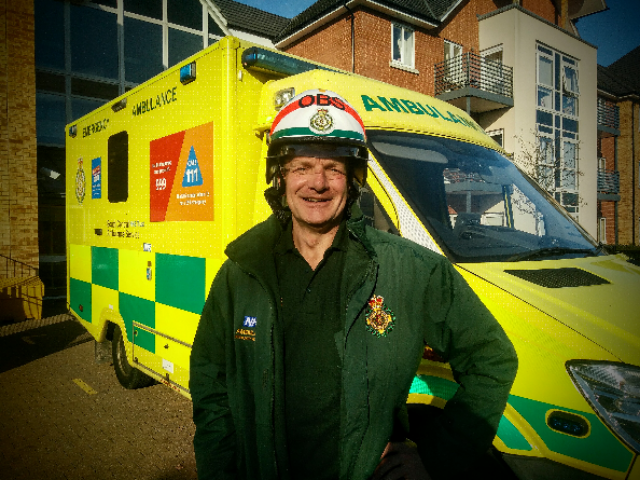
I have trained as an ambulance Community First Responder and have attended numerous 999 emergencies including four cardiac-arrests, achieving ROSC (return of spontaneous circulation) in two of the patients, and I understand one survived to be discharged from hospital.
So, I think I have achieved payback for someone saving my life and also, I have joined the “club” of one of the few people in the world who has given as well as received CPR (and a defibrillator shock); I’m not sure, on balance, as to whether I really want to be a member of that club given its entry criteria!
I was (and still am) under the care of Bart’s hospital (Electrophysiology and Inherited Cardiovascular Diseases) but consultations were pretty much routine. A series of MRI scans showed that I had enlarged heart chambers, and possible cardiomyopathy, although genetic testing showed I did not have the genes for “classic” cardiomyopathy the jury was 50/50 on whether I, indeed, did.
Cardiac size is a strange topic, my search of literature has found some medics who scale heart to body size (BSA – body surface area), some don’t. I am 1.88m tall and my shoulders about the same width so my heart scaled to BSA is normal. As our American cousins say “go figure”.
Subsequent to my arrest, Atrial Fibrillation (AF) has been observed (and it is likely that I had undiagnosed AF prior to my arrest), but my cardiac function is normal and the AF doesn’t bother me.
I have also had two cardioversions and catheter ablation to try to cure it, all to no avail. I’m due another ablation, however, a tiresome global pandemic has got in the way of this.
Despite asymptomatic AF all was well health-wise until the results of a 24-hour Holter ECG recorder taken in September 2020 were reviewed. On the trace, it was observed that I had had a short-run of non-sustained ventricular tachycardia (NSVT) and that complete heart-block has been observed when I was asleep. The NSVT was not particularly exciting, it was only a few beats and was self-terminating, the heart-block was more concerning.
Heart block

I am a physicist by training, although I have worked in IT for the last 25 years. In recent years I have been more interested in life-sciences and from my CFR training (and additional healthcare qualifications) I have a better knowledge of heart conduction, rhythms and ECG traces than previously. The complete heart-block was slightly concerning because of this.
It would appear I have been dealt a poor hand with respect to genes for cardiac function; personally, I blame my parents.
Normally a heart will beat in a coordinated manner due to electrical conduction from the top of the heart (starting in an area called the SA node) making the atria contract, it travels to the AV node, where there is a pause and then it travels down bundles of fibres around the bottom of the ventricles which cause these to contract.
This electrical signal can be summarised (it’s not quite this simple in reality) of the standard “blip” on an ECG trace. In complete heart block, there is a blockage of the signal from the top of the heart to the bottom so that the chambers do not beat in a coordinated manner (the heart is very complex and contains “backup” circuits so even if this occurs the heart continues to beat).
If complete heart block is observed in a patient it makes them a candidate for a pacemaker.
The view from the Bart’s was that, ordinarily, I would have a Pacemaker, however, my cardiac history, the NSVT and the fact that although my original arrest was explained in terms of an MI causing VF my arrest, this was never accepted as a “full explanation” (based on ECGs, cardiac muscle damage seen on MRI, enzyme levels etc.).
So, Bart’s decided that I ought to have a dual ICD and Pacemaker. This is a single device which contains both a Pacemaker and an ICD (rather than being two separate devices).
Unhappy
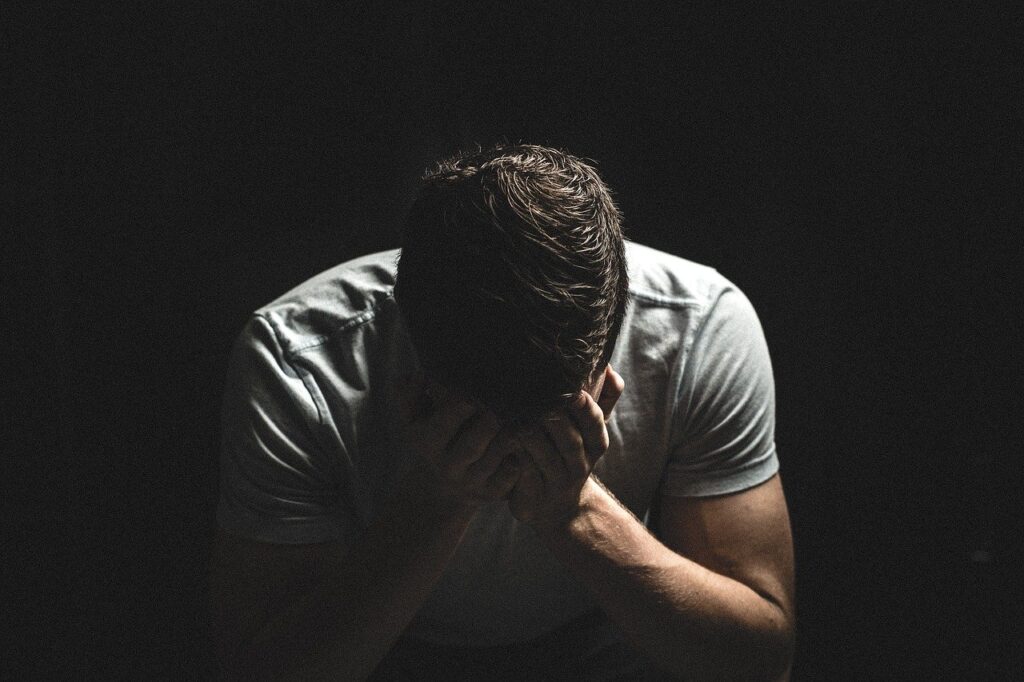
I was not happy.
I realise how lucky I was to survive and out-of-hospital cardiac-arrest, I realise how lucky I am not to have suffered any after-effects, I realise how lucky I am to have returned to life as normal, but July 2016 and my arrest were in the past and to all intents and purposes there was nothing “wrong” with me.
Having an ICD and Pacemaker would mean, psychologically, that there was.
Of course, there was a fair degree of denial on my part in play here, however, being fit and healthy and back to normal I really didn’t want the label of being someone with a Pacemaker or ICD, especially the latter and the restrictions it would place on some activities I wanted to do.
After much internal reflection I accepted the need for the device(s) and have taken the view that it will, hopefully, never been needed and is there to prolong my life as an “insurance policy”, and for this, I am forever grateful to Bart’s and the NHS.
Bart’s arranged for the procedure to insert the ICD/Pacemaker as an “emergency”.
Ordinarily, this would mean it is done on the timescale of a week or so. However, due to the enormous demands on the NHS in the second wave of Covid I had to wait.
My AF means I have an irregular heartbeat and my heart slows to forty to fifty beats per minute when I lie down. Ordinarily, this did not bother me, but once it was decided that I was to have a device I was a little “spooked” when trying to go to sleep, was my heart going to stop when I was asleep?
I managed to get to sleep by reminding myself of my mantra when I first came out of hospital: “David, you’ve woken up every morning alive for the last 58 years, why would tomorrow morning be any different?”
True to form, I woke up, alive, the next morning (and every morning!).
Knowing that I would more than likely have to convalesce for two months and not use my arm properly for that time I stepped up a notch my exercise regime to try to counteract the “lardiness” I would have post-op.
After approximately three months I received an appointment from Barts: the 13th of January 2021 was to by my D-Day (defibrillator day).
In mid-December 2020 I had a “pre op” telephone consultation where the details of the procedure were outlined, the risks, the post-op recovery. Questions about fever and Covid were asked and I was told that I must isolate for fourteen days before the procedure. I was to be posted a Covid swab-test which I had to post back 5 days before my procedure.
I was set to go.
The isolation bothered me a little as I am a CFR and the Ambulance Service has unprecedented demand so I wanted to “do my bit”. However, I had to comply with the needs of the procedure so I did my last (busy) CFR shift on the 30th December 2020 and then sat in isolation.
Bart’s had provided my links to videos about my procedure, however, unusually for me, I didn’t watch them, I didn’t want to know the detail of what they were going to do to me, I was spooked enough already.
Five days to go and I did my swab test (which involves showing a cotton bud to the back of your throat and then in your nose and then sticking it in a plastic pot) and posted it back to Bart’s and began my countdown.
As D-day approached I became more anxious, I didn’t like the thought of opening up my chest and wires being inserted into my heart and I had visions of the procedure going wrong (who said I was the eternal optimist?).
Normally, for this procedure, you would be accompanied to the hospital and then escorted home. However, due to Covid infection control, no one can come to the hospital with you. As I live in Hampshire I also had to travel to and from Bart’s on my own, ordinarily, no big deal as, prior to Covid, I worked in the City so was used to the daily commute.
However, in Covid lockdown, there was a little apprehension about using public transport (even though I have Covid antibodies from being infected in March 2020) so I considered the expense of a taxi. On balance, I thought an hour to London on a train was preferable to three hours in a taxi, so I plumped to take the train.
The night before my procedure I was very apprehensive as I packed my rucksack with clothes (in case of an overnight stay), wash-kit, books, phone and my PPE for the train.
Keep your distance

I didn’t sleep much and the alarm at 05:30 was, in a way, welcome: time to “bring it on”. I was concerned about picking up Covid on the train, not from an infection point of view (as I have antibodies) but I knew that I would be swab tested at Bart’s and I didn’t want the procedure to be cancelled. That being the case I used the full-on set of PPE that I had: goggles, and FFP3+ respirator, face visor, nitryl gloves and lots of Clinell-wipes to clean things.
Needless to say, wearing all this (and with my height) meant people gave me a very wide berth on the train!
I arrived at Waterloo and removed my PPE once I had left the station and I walked to Bart’s (I viewed this as being safer than using the tube or a bus), my anxiety levels rising with each step.
Once at Bart’s I had my temperature taken at reception then I was allowed up to the 3rd floor cardiac wards. I had expected many more patients, however, due to Covid there were only two that day and I was ushered into the ward (more a like a private room as there were no other patients next to me).
I washed, took off my clothes put on a gown and lay on the bed (anxiety getting worse).
The surgeon came to see me and told me “everything’ll be fine”, I was not convinced, but was looking forward to getting the procedure underway and the sedation (Morphine and Midazolam) into my arm.

We held a discussion, as I am left-handed, as to whether I wanted the device on the left or on the right. I had thought about this before and had concluded that the surgeon probably does many more left-side ICD insertions than right-side so would be more familiar with the anatomy on that side, so I plumped for the left (who says I overthink things?).
The surgeon agreed that this was the best side to go, for a Pacemaker it makes no difference, for an ICD, if it has to shock you, he thought it better for it to be on the left.
Observations were taken (temperature, blood pressure, heart-rate), an ECG was performed and then cannulas out into my left and right arm. Normally my veins are visible and easy to cannulate (to the point of I could cannulate myself), however, the had all disappeared, so it took many attempts to get the cannulas in (with the consequent Edoxoban induced bruising on the failed sites). I was given intravenous antibiotics through one of the cannulas (this is an infection-prevention measure) and then I was wheeled down to the Cather Lab.
The team introduced themselves to me and I got off the trolley and onto the operating table. I was asked what music I wanted (I never knew that this was an option before) so I settled on my guitar-hero John Mayer and I lay back on the table as the sedatives were placed in my arm and I was made-ready for the procedure.
I was anxious but had begun to relax a little until a defibrillator pad was peeled off its backing strip and placed on my right shoulder. At this point, PTSD from my emergency visit in 2016 came in to play and I had, what I can only describe, as a wobble. All entirely irrational and I fought myself internally to stop it. Eventually, I calmed down and had the corresponding defibrillator pad put on my lower left rib-cage. A blue sheet was hung down the left-hand side of my face so I could not see the procedure, a wise move I think on behalf of the medical team, although, now, back at home, I wish I had observed it.
Blast off
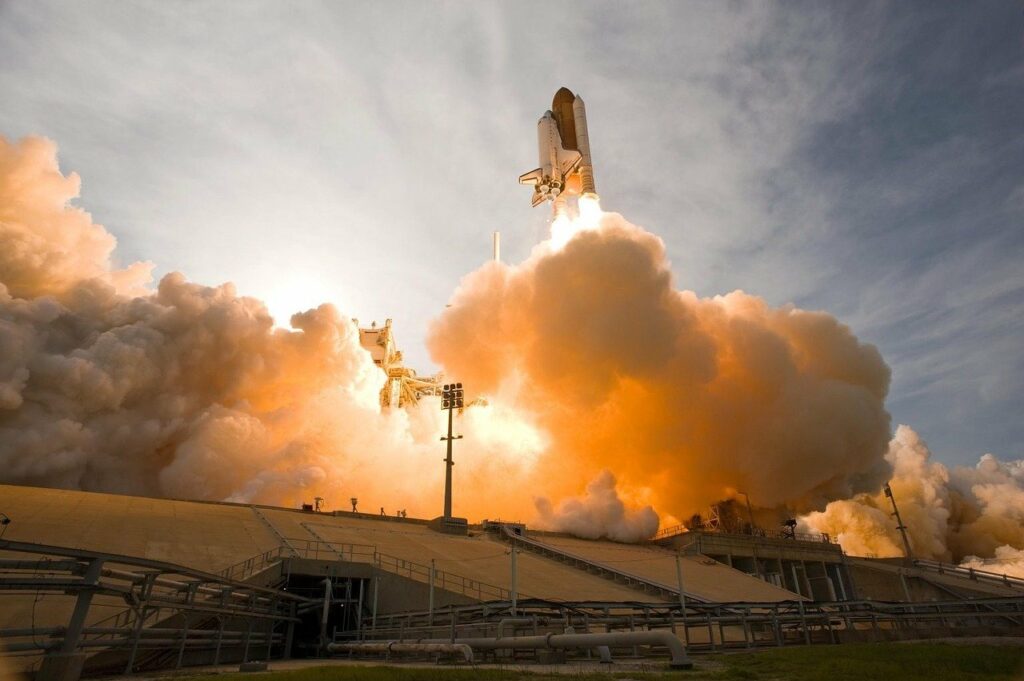
We were off.
Local anaesthetic (Lidocaine) was injected into my upper pectoral area and an incision made. This felt very strange but was not painful bar the odd spiking pain. When pain did occur more Lidocaine was administered. The opening was clamped open and then it felt like the surgeon pushed his hand into my chest cavity in search of a vein in which to insert wires. I was particularly concerned about the wire insertion and the concept of wires descending into my heart and embedding in the chamber walls. Whether this part was trivial or Midazolam erased the memories (that is what it does) I found this part a breeze and I realized that my anxiety has completely disappeared and I was very chilled, to the point of joking and laughing with the nurses and medical team.
My concept of time was messed up by Midazolam and it wasn’t long before the hand returned to my chest cavity to push in the ICD/Pacemaker. Then there were some pre-flight checks on its operation and the sewing up of the opening began.
Before I knew it they were dismantling the equipment, removing the defibrillator pads (along with my body hair) and attaching what I can only describe as medical-grade gaffer-tape placed back, over-shoulder to the chest to hold a pressure-dressing in place. I was wheeled back to the ward and asked what I wanted for lunch.
Why?

Why had I been so anxious?
The whole thing was a breeze.
The nurses on the ward were very funny and we swapped anecdotes and they wanted to know about my cardiac-arrest. I showed them the CCTV footage and they then asked me how I was still alive!
A cardiac-device physiologist came to see me to discuss my device. I had, like many members in the group, been expecting a bed-side “box” to have at home which would communicate with my device and send the data to Bart’s.
However, this was not to be. I had the latest ICD/Pacemaker from Abbott Medical which contains a Bluetooth interface, so instead of a bedside box, I have an app on my phone (see below).

I am, literally, Bluetoothed to my phone!
After four hours the medical-grade gaffer tape was removed (along with what remained of my body hair) and after a quick assessment, it was deemed that I didn’t need to stay the night and was free to go.
When I had my last Cardioversion in 2019 my son accompanied me. I was given Morphine and Midazolam and I was convinced, when I was discharged, that I was was “perfectly fine”. My arrogance was interrupted by me walking into the door-frame of the main entrance to Bart’s as I tried to exit the building! Therefore I had decided not to take the train home but to take a taxi (and shoulder the expense), which, in retrospect, was a wise move.
A nurse carried my bag down from the ward and helped me into a taxi and off we set. The Midazolam obviously worked as “five minutes later” we had travelled 70 miles and were parked outside my house.
D-day was over.
I am currently recuperating. The wound had a sterile dressing over it which I removed after a week. I stripped washed for a week to keep the dressing dry. Pain from the wound was moderate, but it was painful when I moved. The worst bit has been not being able to raise my left arm above my head, which I mustn’t do for six weeks in case I pull the wires out of my heart. So I have tied it to my belt using an old neck-time (see pic.).

The wound “smarts” from time to time and as the tissue is knitting together I get sharp stab-like pains, but nothing that Paracetamol can’t deal with. Sleeping has been intermittent as moving in my sleep seems to trigger pain which wakes me up. All in all, a small price to pay for having the device.
Interestingly, my Pacemaker does not currently pace my heart, it is set at a low threshold so if my pulse drops below 30 BPM it will pace me, or if heart-block is detected it will take over. The ICD just sits there waiting to work if needed. So I really do have two safety devices in my chest that sit there passively monitoring me.
What had I been so worried about?
Footnote: I am extremely appreciative of all the staff at Bart’s and the NHS that made this possible and for the excellent care that I received.
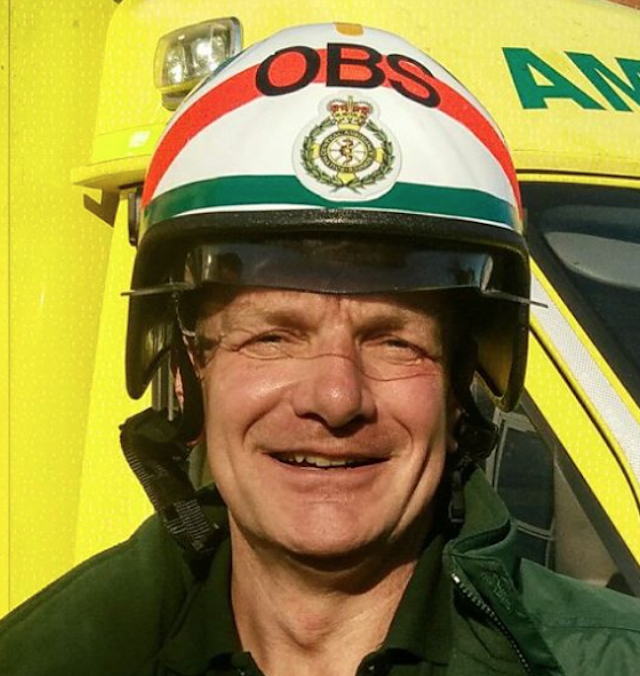
Physicist, software developer, CFR, lifesaver, SCA survivor

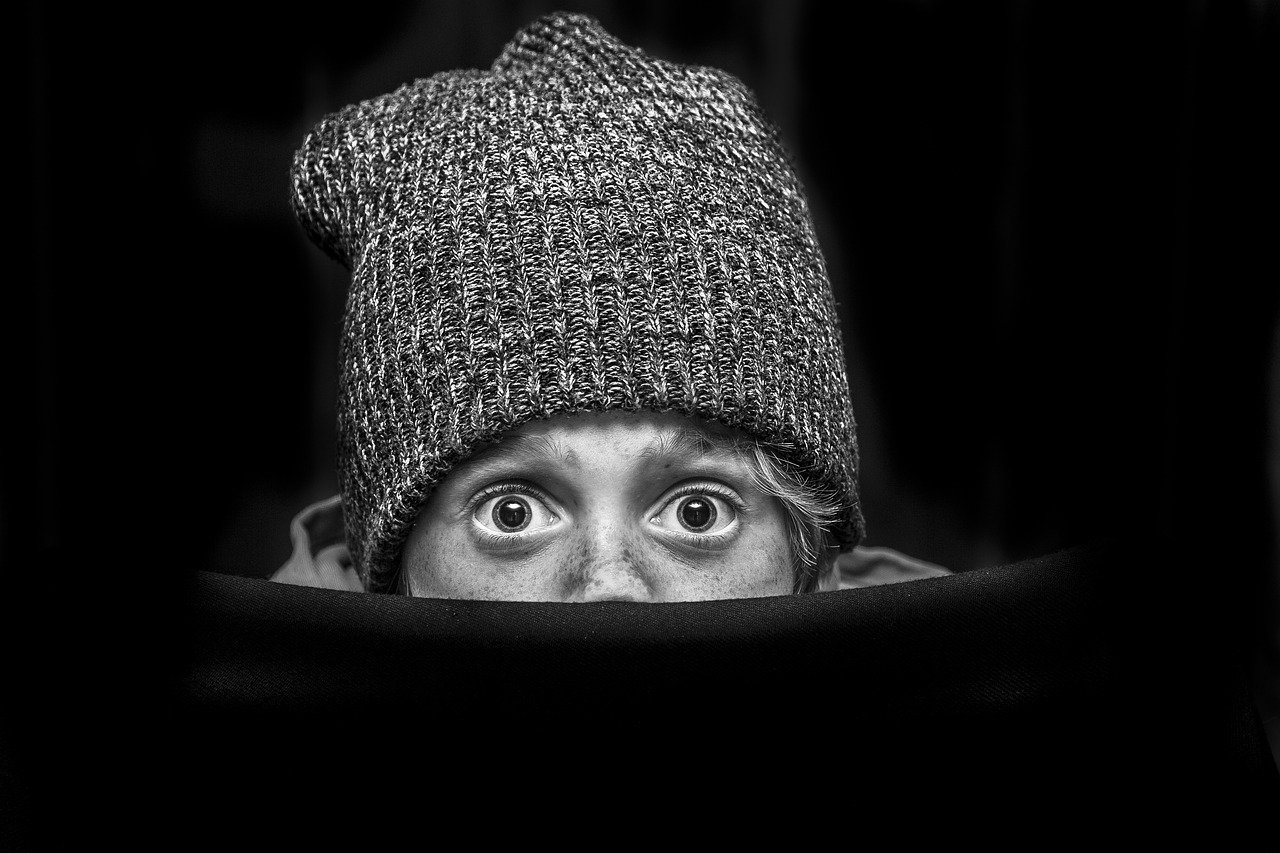
Hi David sounds just like me leading up to the event. that was 4 years ago this march 10th. all good. before you know it , you will forget
at times you even have it
Hi David. So many similarities in our stories (I’m even left-handed). In March 2015 I was given CPR and shocked back into rhythm following VF. I was told I had an enlarged heart and Hypertrophic Cardiomyopathy was suggested although genetic investigation was inconclusive. My ICD was fitted in April 2016. I had many similar thoughts to you. I was surprised what a battering my body took following the procedure. Although I felt nothing at the time I was black and blue afterwards. Now, I forget I have it and automatically use my left hand to do such tasks as painting, sawing and hammering. However, I am so glad I had the device fitted. In March 2019 I received a telephone call from the Cardiology team asking if I realised I had been shocked by my device. I was totally unaware that in the early hours of the Saturday morning, while I was sleeping, I had gone into arrest and my ICD had saved me. Like you I had always thought the device was my ‘insurance policy’. Now, I’m pleased to say that the ‘insurance policy’ works!
Great story David. I too, could go into so many details as I am on my third ICD. The fear will subside and the device will become despite your protestations, known as ‘your best friend.’ I have been shocked 24 times in the past 13 years and was assured that each event was fatal without my best friend. We adapt and grow, I’m no longer doing some of the sports I played, but surprisingly d not miss them now. Good luck with your journey brother.